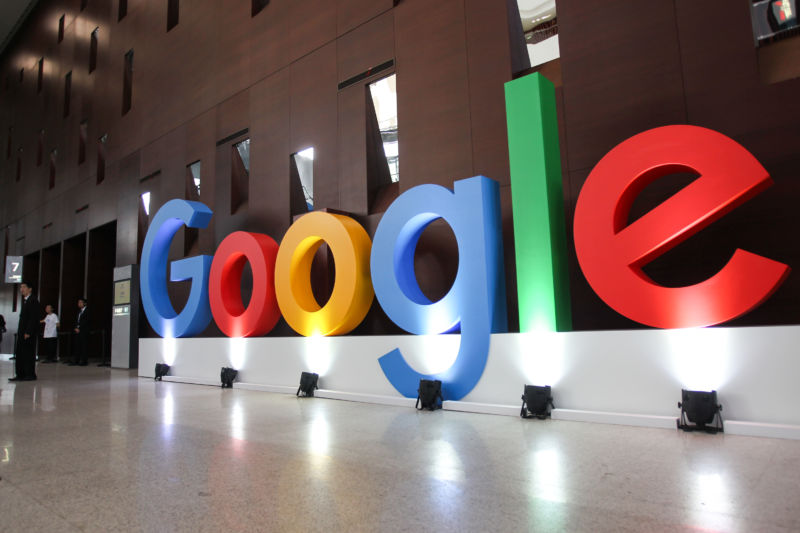
The Google empire is enormous and ubiquitous, covering basically the entire Internet in one way or another. There is, however, one lucrative business the company does not yet have a foothold in: banking. And now it has plans to change that.
Google is working to launch consumer checking accounts next year, The Wall Street Journal first reported this morning. The project, code-named Cache because apparently nobody can resist a pun, is expected to launch next year, sources told the Journal. CNBC, also citing “sources familiar,” confirmed the WSJ’s reporting.
Google: Not a bank
The accounts will be run in partnership with Citibank and a credit union based out of Stanford University. Google executive Caesar Sengupta told the WSJ that the accounts will carry branding from the banks, not from Google, which will also “leave the financial plumbing and compliance” to the banks.
Google and its partners are still hammering out the details of these accounts, including whether or when accounts might incur fees. (Many banks that offer checking accounts waive monthly fees for customers who maintain a certain average balance or who use direct deposit.)
“Our approach is going to be to partner deeply with banks and the financial system,” Sengupta told the WSJ. “It may be the slightly longer path, but it’s more sustainable.”
Banks are subject to fairly strict regulatory standards. An institution offering a checking account must comply with a lengthy list of federal laws, as well as any relevant state laws that might apply.
That’s the same kind of partnership Google’s major mobile competitor Apple has taken. Apple this summer launched a credit card that all US iPhone users are eligible to apply for. While the card carries Apple branding and is managed through an Apple-designed iPhone app, the bank behind the card is Goldman Sachs, which took the partnership as an opportunity to expand its individual consumer business.
A partnership with Google could be a similar opportunity for Citibank. Citi is the nation’s third-largest bank, behind JPMorgan Chase and Bank of America, but has a smaller retail banking footprint. Chase operates about 5,000 US branches, and CEO Jamie Dimon said earlier this year it plans to cover about 93% of the US population by 2022. BoA has about 4,300 branches and says its footprint will encompass 90% of the United States by 2021. Citi, on the other hand, operates about 700 branches and has about $800 billion less in assets than Chase does.
For Google’s part, there are two populations such an arrangement could easily zero in on, without even doing any work to convince current checking-account holders to switch. First: younger consumers. Teenagers and young adults are digital natives, already using their phones for everything, but they may not yet have settled in with a bank anywhere yet. Any of those who have Android phones could be an easy built-in market.
Second: the un- and underbanked, who are not currently served well by traditional financial institutions. About 6.5% of US households were completely unbanked in 2017, according to federal data, and another 18.7% were underbanked. That population, about 33 million households, skews heavily toward low- and very low-income individuals—groups who are likely to use inexpensive Android phones as their main method of connecting to the Internet.
The data machine
If you want to know almost everything about a person, you can look at their bank account. Your pay goes in, with a very precise amount and source, and your spending—where, when, how, and how much—all comes out.
Google wants to “bring value to consumers, banks, and merchants, with services that could include loyalty programs,” the WSJ reports, but Sengupta said the business does not intend to sell checking-account customers’ financial data. The company also told the WSJ that it does not use data from Google Pay for advertising purposes or share that data with advertisers.
That’s a choice that Google could easily change, however. There are very clear regulations about what data banks can share about you, but those policies end up saying they can share quite a lot of information, and you can’t limit most of that sharing. Regulation has largely not yet caught up to mobile wallets such as Google Pay and Apple Pay, meanwhile, so those exist in something of a gray space.
In 2014, during the Obama administration, the Consumer Financial Protection Bureau began examining the implications of mobile payment services, including issues relating to data and privacy. CFPB action has been curtailed during the Trump administration, however, with current director Kathy Kraninger significantly cutting back on bureau activity and agreeing the agency is unconstitutional.
But unspecified advertisers outside of Google are not the only concern. The company is large enough, with enough enterprises under its umbrella, for users to have legitimate concern about data use by Google, inside Google.
Earlier this week, The Wall Street Journal reported that Google is hoovering up health care data from tens of millions of patients, potentially adding fuel to the criticisms that the company is too big and has far too much user data accumulated.
Sen. Mark Warner (D-Va.) told CNBC today he has concerns about the proposal.
“We’re going to see greater use of data in all sectors, including finance” Warner said. “I’m concerned, whether it’s [Facebook’s] Libra or whether it’s the Google proposal around banking, where we have these giant tech platforms entering into new fields before there are some regulatory rules of the road. Because once they get in, the ability to extract them out is going to be virtually impossible.”
